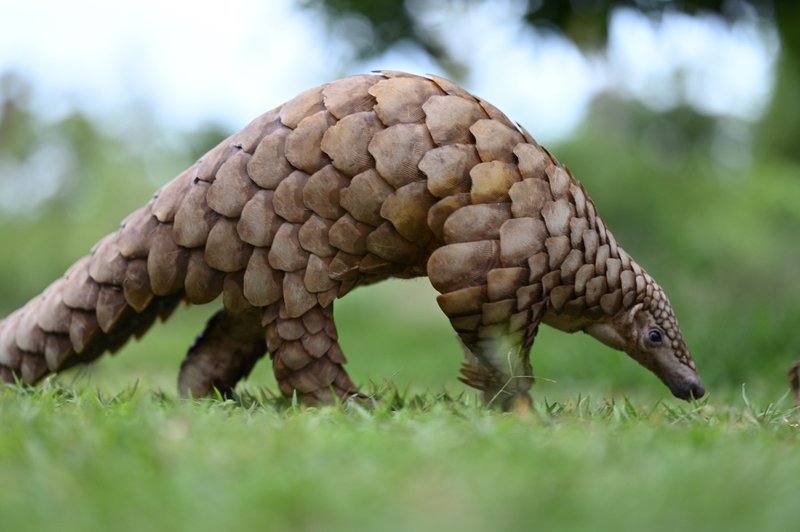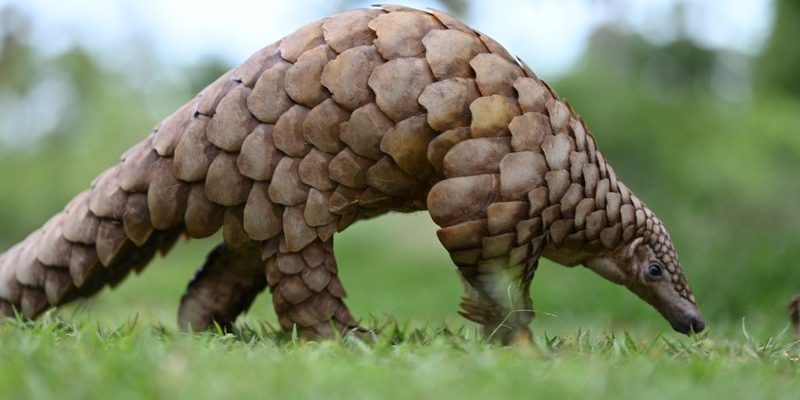
Pangolins are the only mammals covered in scales, which might lead you to think they’re tough little warriors of the wild. However, they face serious threats from poaching and habitat loss. With all these misconceptions out there, it’s time to delve into the truths about the Indian pangolin and clear up some of those myths. So, grab your coffee, get comfy, and let’s break down what you need to know about this remarkable creature.
Here’s the thing: many people picture pangolins as fierce creatures that would lash out if threatened. In reality, Indian pangolins are quite the opposite. These shy animals prefer to avoid confrontation, often curling up into a ball when scared. Their scales provide some protection, but they don’t have sharp claws or teeth designed for fighting.
Instead, they rely on their unique ability to dig and burrow through the ground. If they find themselves in danger, they’ll dig into the soil to escape. So, when it comes to their temperament, you could say they’re more like introverts who enjoy their alone time rather than aggressive fighters.
It’s easy to misunderstand their behavior, especially when we compare them to other wild animals. Think of them as the wallflowers of the animal kingdom: they’d rather blend into the background than stand out in a fight.
Myth 2: Pangolins Are Reptiles, Not Mammals
You might be surprised to learn that pangolins are indeed mammals, despite their scaly appearance. Their scales are made of keratin—the same material found in human nails and hair. Just like us, they give birth to live young and nurse them.
This misconception may stem from their resemblance to reptiles. But honestly, the Indian pangolin has more in common with cats and dogs than lizards or snakes. They have a warm blooded nature, fur on parts of their body, and their young are fully dependent on their mothers after birth. So, while they might look like an armored lizard, they are very much mammals at heart.
Myth 3: Pangolins Are Just Insects Eaters
It’s true that pangolins primarily eat ants and termites, and they’re quite good at it! Their long, sticky tongues can reach deep into insect mounds, allowing them to feast on unsuspecting bugs. But there’s more to their diet than just insects.
Pangolins also consume various types of soft fruits and plant matter. Their diet can vary based on their environment, but their adaptability is what makes them resilient. Imagine having a flexible menu that changes with the seasons; that’s what pangolins can do!
So, while they’re often dubbed the “ant-eaters,” it’s essential to recognize the diversity in their food choices. This flexibility helps them thrive in various habitats across India.
Myth 4: All Pangolins Are Critically Endangered
While it’s a fact that pangolins face significant threats, not all species are at the same level of risk. The Indian pangolin is classified as “endangered” due to poaching and habitat loss, but other species have different statuses. For instance, the Chinese pangolin is currently listed as “critically endangered,” meaning it’s at a higher risk of extinction than its Indian cousin.
However, you might wonder what that means for conservation efforts. Protecting pangolins relies on understanding the specific threats each species faces. Conservation groups are working tirelessly to combat illegal trade and preserve habitats, but awareness and education about these distinctions can help rally more support.
By clarifying which pangolin species are in the most danger, we can better focus our efforts and resources.
Myth 5: Pangolins Don’t Contribute to Their Ecosystem
You might think that a small, scaly mammal doesn’t have much impact on its environment, but that couldn’t be further from the truth. Indian pangolins play a crucial role in maintaining the balance of their ecosystems. As they dig for ants and termites, they aerate the soil, which benefits plant growth.
Their foraging habits help control insect populations, too. Without these little guardians of the ground, insect numbers could soar, potentially damaging crops and disrupting local ecosystems.
So, the next time you hear someone dismiss the importance of pangolins, remember: they’re eco-warriors in their own right. Every creature contributes to the bigger picture, and pangolins are no exception.
Myth 6: Pangolins Can Roll into a Ball Instantly
You might have seen videos of pangolins rolling into a ball like a living armadillo, but the process isn’t as instantaneous as it seems. When threatened, they do curl up, but it takes a few moments for them to fully tuck themselves in.
This behavior serves as a defense mechanism. By rolling up, they protect their vulnerable underbelly and scales, creating a tough barrier against predators. However, if you’re hoping to see it in action, be prepared to wait. It’s not the quick defense you might expect; it’s a careful, deliberate move.
This myth highlights how we sometimes oversimplify animal behaviors based on what we see on screen. In reality, nature is full of nuances, and the pangolin’s actions are no exception.
Myth 7: Pangolins Are Not Social Animals
When you think of solitary animals, pangolins might come to mind, but they’re not entirely antisocial. While they do spend a lot of time alone, especially when foraging, they can be found sharing their habitats with other pangolins.
During mating seasons, these animals interact more frequently, and mothers are quite social with their young. They care for and teach them until they can fend for themselves. Think of it this way: it’s like they have their own little family time even in their predominantly solitary lives.
So, while they might not throw parties or hang out in large groups, Indian pangolins do have their social moments, reminding us that even the shyest creatures have their connections.
Clearing up these common myths about the Indian pangolin is essential for understanding and appreciating this unique creature. While they may seem like simple, scaly mammals, they’re filled with fascinating traits and important roles in our ecosystems. From their insect-eating habits to their shy demeanor, every aspect of their lives deserves our attention.
Understanding the truth about the Indian pangolin not only helps protect them, but also encourages greater conservation efforts. When we dispel myths and share knowledge, we can foster a deeper connection to the natural world around us. So, let’s keep the conversation going and work towards a future where these amazing creatures thrive in the wild.

